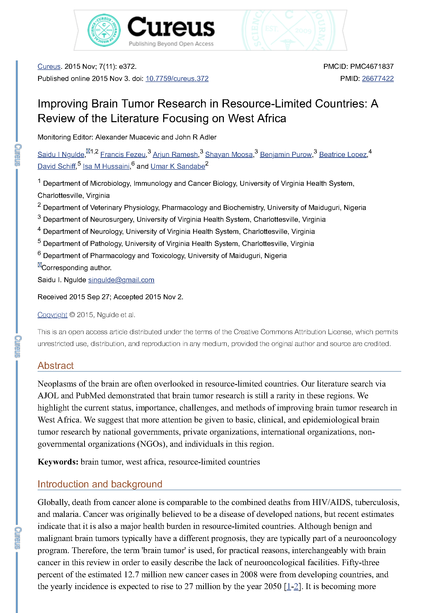Improving Brain Tumor Research in Resource-Limited Countries: A Review of the Literature Focusing on West Africa
Cureus. 2015 Nov; 7(11): e372.
Published online 2015 Nov 3. doi: 10.7759/cureus.372
PMCID: PMC4671837
PMID: 26677422


